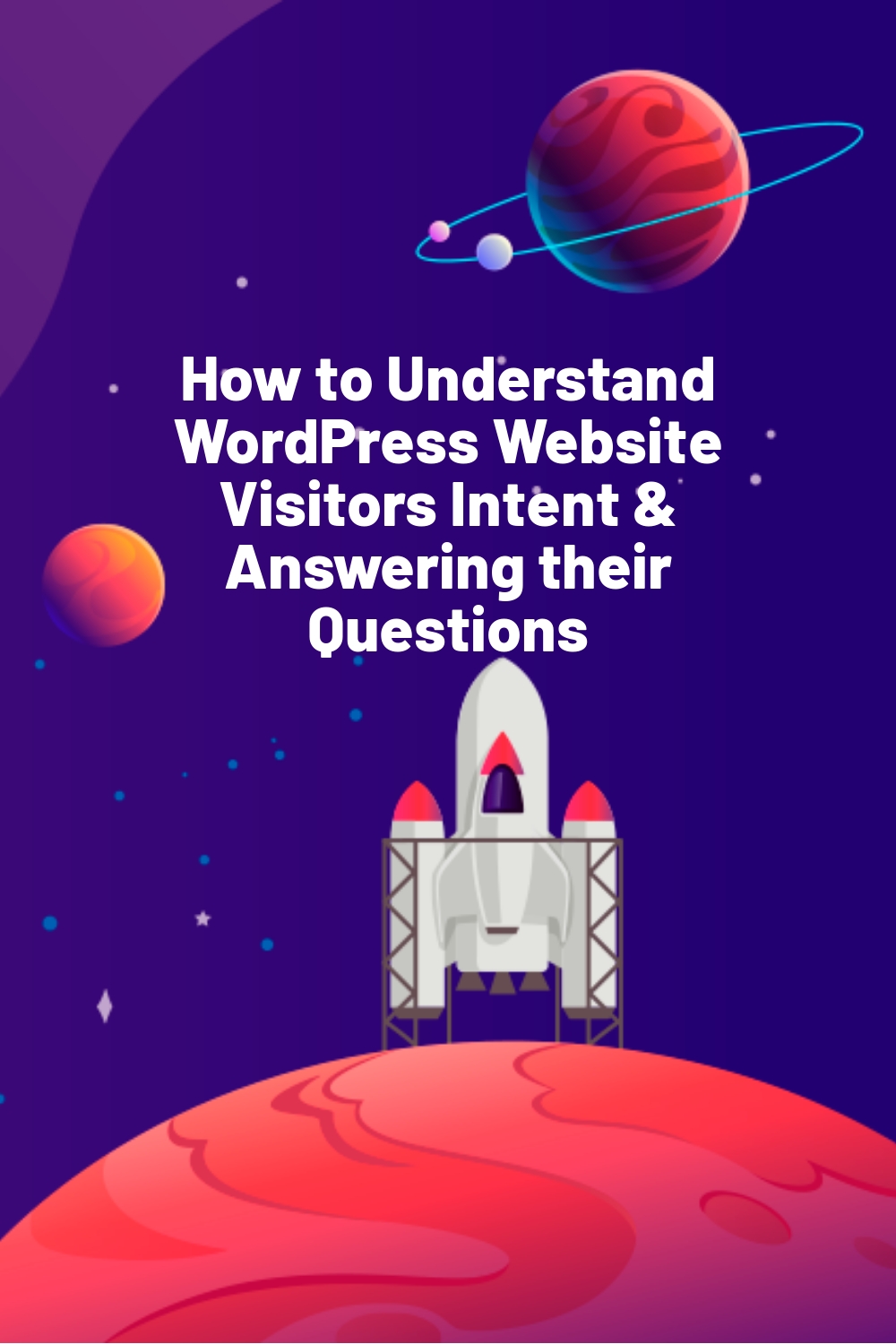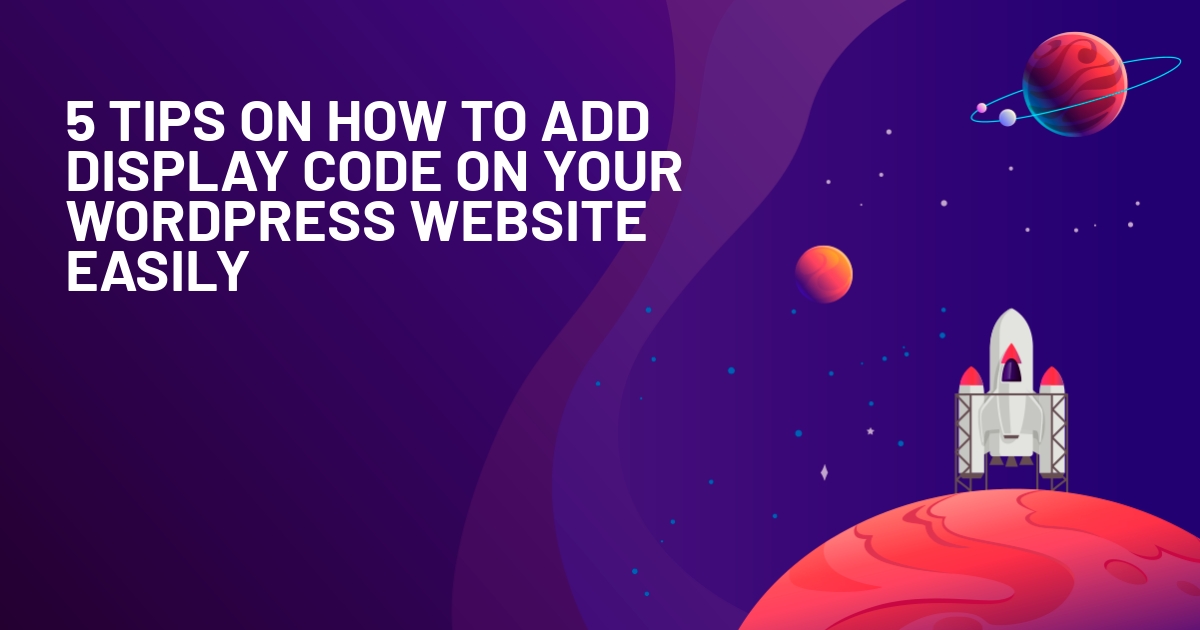WPLift is supported by its audience. When you purchase through links on our site, we may earn an affiliate commission.
How to Understand WordPress Website Visitors Intent & Answering their Questions

If you’re struggling to generate the kind of organic traffic you need to achieve your goals, learning how to understand the search intent of your visitors may be the key to unlocking your success.
In this comprehensive guide, you’ll learn everything you need to know about website visitor intent, how to craft compelling, search-engine-optimized content that matches that intent, and why doing so could prove to be a game-changer for your WordPress website.
What is Search Intent?
Search intent simply refers to the specific purpose or reason behind any query typed into a search engine such as Google.
A fundamental cornerstone of SEO (Search Engine Optimization) is understanding the intent behind your WordPress website visitor’s search queries for carrying out effective keyword research and creating content that provides exactly what your audience is looking for.
Why Does Search Intent Matter for Your WordPress Website?
Whether it’s the answer to a particular question, a product they want to purchase, or research for an upcoming vacation, meeting your visitor’s needs as precisely and comprehensively as possible opens doors to a host of benefits, including
1. Better Search Rankings
With over 5 billion indexed web pages competing for visitors, search engines, such as Google have a heck of a job on their hands organizing all that content to ensure the right pages are served in response to the right queries by the right users at the right time.

With that in mind, it’s no wonder the search giant’s algorithms have been placing an increasing emphasis on search intent to respond to queries with the most accurate search results containing content that best aligns with what users want to find.
If you’re already somewhat familiar with SEO, you can probably already start to see how this can be of benefit to you and your website.
The more your content gives visitors exactly what they’re looking for, the more Google is going to look favorably on your content, and the higher you rank in search results for highly targeted terms relevant to your niche.
2. Improved User Experiences
Few things are more crucial to the long-term success of your website than delivering optimum user experiences.

Article Continues Below
The simple truth is that, as long as other key user experience elements are in place, visitors who find the content they’re looking for are likely to have a positive experience on your website.
That means they’re more likely to stick around longer, check out more pages or products, and perhaps even convert into a loyal, returning visitor.
Ultimately, this means more traffic and higher levels of engagement, both of which not only provide a welcome boost to your brand but also strengthen the signals to search engines that your site is a valuable resource worth ranking highly.
3. Reduced Bounce Rates
Another added benefit of improved user experiences is a reduced bounce rate.
Bounce rate is an important SEO metric that describes the number of users (expressed as a percentage) who leave (or “bounce” off) your website after viewing only one page.
As we’ve already seen, giving users content that matches their search query intent means they’re more likely to stick around and click on other pages, lowering that bounce rate.
The lower the bounce rate, the more positive signals you send to search engines, leading to better ranking, and more highly targeted organic traffic.
4. Increased Conversion Rates
When your content meets the specific intent of your target audience, it’s more effective at guiding users toward the actions you want them to take, whether that’s making a purchase, signing up for a newsletter, or engaging with your services.
Ultimately, this means higher conversion rates, driving you closer to achieving whatever objectives you set for your WordPress website.
5. Enhanced Brand Reputation
When users see that your website consistently provides high-quality content that is relevant to their needs, they are more likely to trust your brand and recommend it to others.
As you continue to build your reputation, you stand a better chance of increasing customer loyalty, scoring direct traffic via user recommendations on social media, and establishing your brand as an expert in your field.
All this increases revenue and opens up new opportunities for partnerships and collaborations as word about your site begins to spread throughout your industry.
That’s not to mention that all this has yet another positive knock-on effect on your website, sending further messages to Google that you and your site are a trusted, valuable resource.
Understanding the Four Types of User Intent
If you’re going to truly understand your WordPress website’s visitor’s intent and answer their questions effectively, you first need to know about the four different types of search intent.
These are:
1. Informational Search Intent
Informational intent is the most common type of search query, accounting for over 80% of web searches.
The term refers to search queries used by visitors to research a topic or find answers to specific questions.
If you run a travel blog, for example, you might run into informational intent in the form of long tail keywords such as “What is Barcelona like to visit in the winter?” while tech bloggers might choose to address informational intent by targeting “how to” keywords such as “how to reformat a Macbook.”
2. Navigational Search Intent
Navigational intent is when users are looking for a specific website or web page by using brand-related search terms such as “Facebook,” “Amazon,” “New York Times,” or, of course, “Your Brand Name.”.
This may be because users remember the name of your business but not your exact URL or because a friend recommended you.
It’s also worth noting that navigational intent can also apply to broader search terms such as “weather forecast” or “stock index.” This is because, even though users aren’t searching for the name of a particular website, they are searching in an effort to navigate their way to a website that will meet a particular need, in this case, the daily weather or latest stock information.
Either way, this is one type of search intent that’s not to be ignored.
After all, users making navigational intent queries are already interested in your website or brand, meaning they are more likely to convert into customers or leads.
The easiest way to meet queries with navigational search intent is to make sure your website is easy to find, with a clear and concise domain name, well-organized navigation, and consistent branding.
3. Commercial Search Intent
Commercial search intent (sometimes called “commercial investigation”) reflects an essential phase in a user’s buying journey.
They’re not yet ready to hand over their credit card, but they are gearing up to make a purchase by actively researching products or services and comparing options to determine the best one to buy.
If you’re running an eCommerce store via WooCommerce or using WordPress to make money from affiliate marketing, this is an essential type of search intent to pay attention to.
By recognizing and addressing the needs of customers in the commercial investigation step of their buyer journey, you can increase your conversion rates by turning information-seeking users into paying customers.
Creating comprehensive guides, high-quality product reviews based on first-hand experience, and unbiased comparison content to meet commercial search queries showcases your expertise and authority in your niche.
This not only helps build trust with your audience but also positions your WordPress website as a go-to resource for informed purchasing decisions.
4. Transactional Search Intent
Following on from commercial investigation, transactional search intent represents the next stage in the buyer journey: Users making transactional search queries have done their research and are ready to purchase or take a specific action.
Of particular importance to online store owners, some of the simplest ways to meet transactional intent are to ensure that your eCommerce SEO is on-point, with optimized product titles, descriptions, and clearly visible buy now or add to cart buttons.
5. Local Search Intent
Local intent involves users seeking information about businesses or services in their vicinity. WordPress website owners can benefit by optimizing their site for local SEO, including adding location-specific keywords and creating Google My Business profiles.
For example, if you own a restaurant, make sure your website displays your address, menu, and hours of operation for users searching for “best Italian restaurants near me.”
How to Determine Your Website Visitor’s Intent: 4 Simple Strategies
Later in this guide, you’ll find more top tips and strategies for meeting each different type of website visitor intent.
However, in order to do that, you first need to know which type of user intent is behind your user’s search queries.
Here’s how to do that:
1. Use Keyword Research Tools
Semrush’s Keyword Magic Tool is a free SEO platform that provides a wealth of information about the keywords people use to find content related to your niche.
Let’s say you run a travel blog and want to target users interested in topics relating to budget travel.

Enter that term as a keyword into Semrush.
This will generate a comprehensive list of the most popular search terms relating to “budget travel” that actual users type into Google.
Not only do you get the keywords themselves, but also useful details such as
- Search volume – The total number of times the keyword was searched for.
- Keyword difficulty – How challenging it will be to rank highly for that term.
- Cost Per Click Price – The average price advertisers pay for each click on an ad using that keyword.
Of course, it also shows you the user’s search intent behind that query. This is represented by the first letter of the search intent type, so C is commercial, I is informational, and so on.
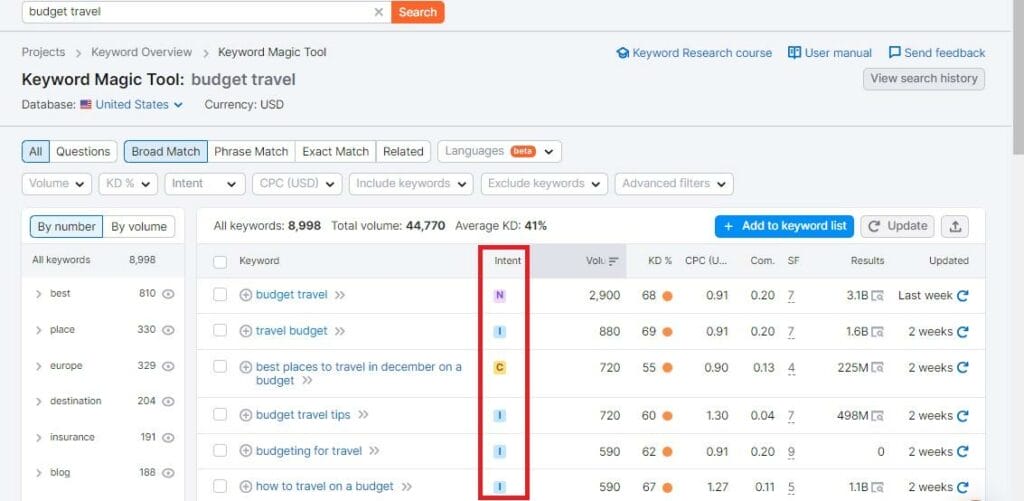
As you can see in this example, “budget travel” is a navigational keyword. Although users aren’t trying to find a specific website, they are trying to find a specific type of website, namely one offering low-cost travel options.
Elsewhere, the term “travel budget” has an informational intent behind it, which may mean that you target this keyword with a helpful guide on how to create a travel budget.
Below that, “best places to travel in December on a budget” is a long-tail keyword with commercial intent, meaning search users are actively reaching a trip they want to eventually book.
You could choose to target this commercial intent keyword as it stands with a listicle-style article.

Alternatively, clicking on that search term will bring up a list of keyword ideas and variations you could use to create highly targeted content.
If Semrush isn’t the right tool for you, you could also use Ahrefs’ free keyword generator.
This popular Semrush alternative doesn’t list the search intent. However, now that you understand the five types of intent and how these are reflected in search queries, it should be easy to figure out.

In this example, searching for the same keyword (“budget travel”) allows us to see a list of questions people ask Google about that subject.
As you can see, the majority of these start with “how to.” This means that a user is looking for information to answer a specific question, making that search term informational in intent.
2. Use Google Sitekit or Search Console
Google Sitekit is an excellent free WordPress plugin that pulls in valuable data from Google Analytics and Google Search Console to help you learn more about how users find your content.
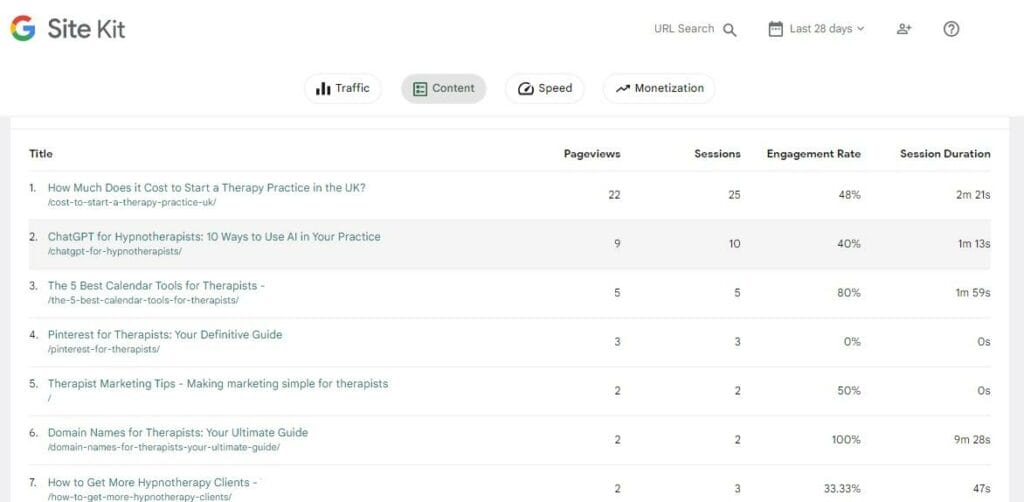
Here, you can see not only the terms users enter into search engines to find content like yours, but also a breakdown of your top-performing content.
This data can provide valuable insights into the types of search intent most prevalent among your audience’s search queries.
For example, if your most popular pages are all product reviews or comparisons, that tells you that a good portion of your audience finds your content useful for answering commercial investigation queries, making it the best type of intent to target with future content.
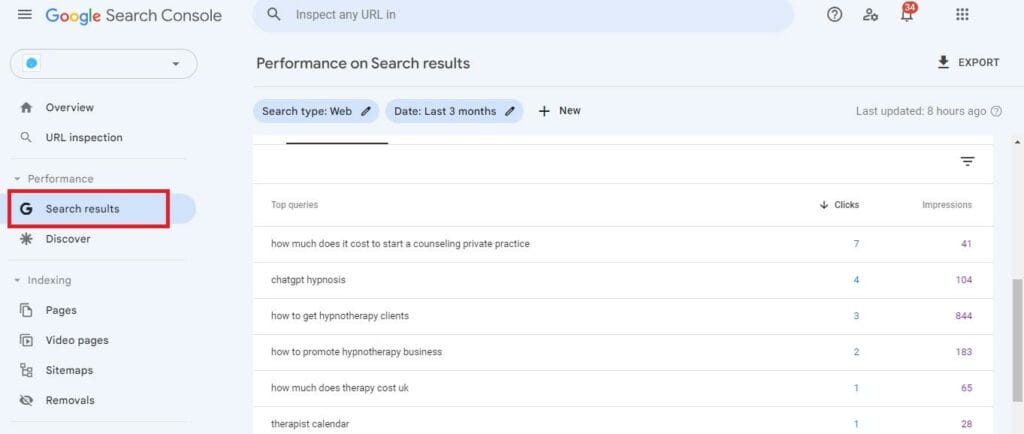
If you’re not keen on using plugins, you can also access this data directly through Google Search Console by clicking on Search Results.
3. Analyze Google Search Results
As effective as our last two methods are, the truth is that you don’t need any special tools or plugins to gain insights into the user intent behind your visitor’s search queries.
All you need is a search engine.
Head to Google and enter a keyword relating to your niche or the topics you want to cover on your website.
For example, you run an eCommerce business selling health supplements and supplies and want more customers buying green tea.
Enter “green tea” into the search, and you might notice that four out of the five top-ranking organic search results are about the health benefits of drinking green tea.

From this, we can deduce that users searching for “green tea” have an informational search intent, as the majority of top-ranking results focus on the health benefits.
This suggests that your content should also provide informative and valuable insights into the topic to align with the user’s intent. By understanding the prevalent intent in search results, you can tailor your content to meet users’ expectations and increase your chances of ranking well and satisfying your visitors.
To give you another example. Say you run a technology blog focussing on hardware, and your goal is to drive more traffic for the keyword “gaming laptop.”

This time, along with sponsored posts for actual laptops, you’ll find that the majority of the top-ranking content is a mix of reviews and comparison pieces, indicating a commercial intent that you can now aim to meet with your own content.
You’ll also see that a lot of that high-ranking content is video-based, which tells you that you might have the most success using this format for your content.
4. Ask Your Users What They Want
Finally, perhaps the easiest way to figure out what your website visitors want from you is to simply ask them.
If you already have an established social media presence, use that to solicit feedback and engage your audience in a discussion about the kind of content that would be most helpful to them.
Alternatively, see our guide to the best WordPress survey plugins to find a tool that will allow you to quiz your audience about their preferences directly from your WordPress website.
We’re going to the TS Poll plugin to show you how you might use this option on your website.
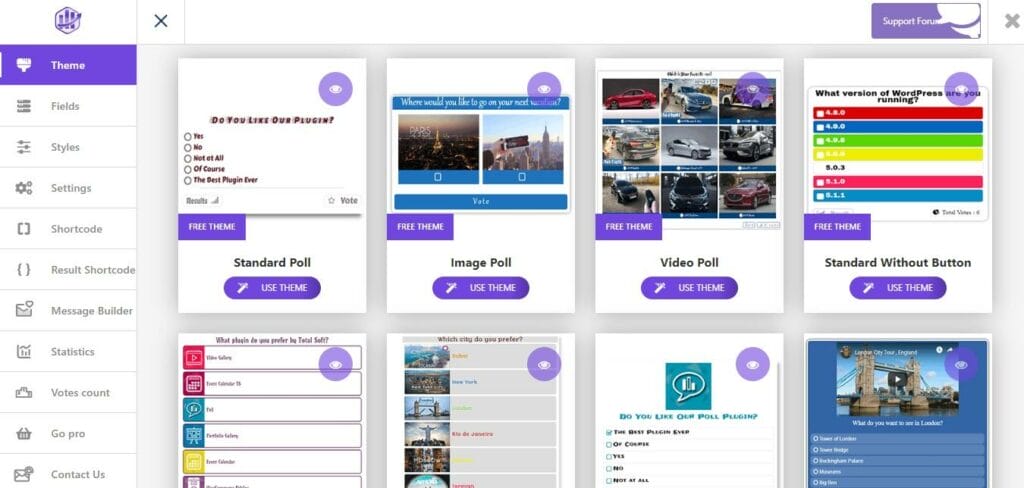
Once installed, you can use a variety of well-designed templates to create custom polls.

To begin, pick the one that best suits your website’s aesthetic and select Use Theme.
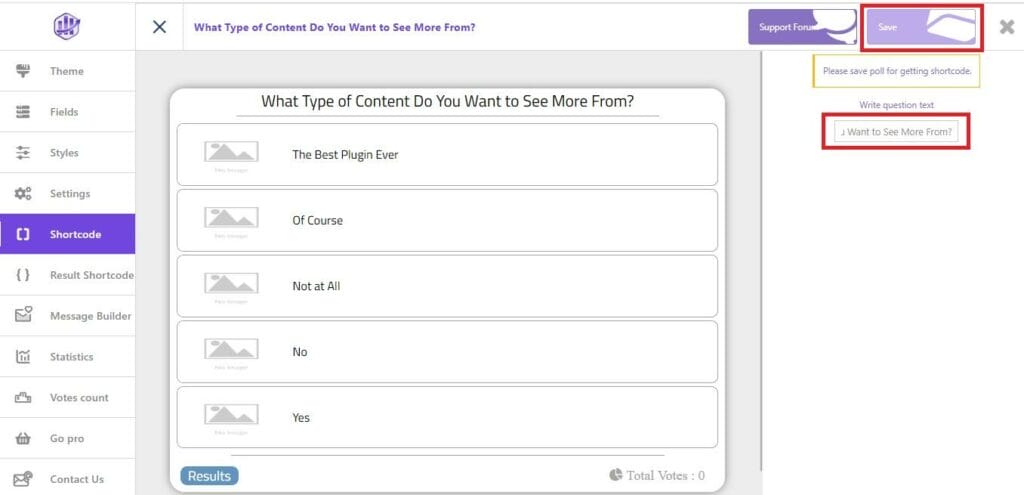
Next, give your poll a name and hit save.
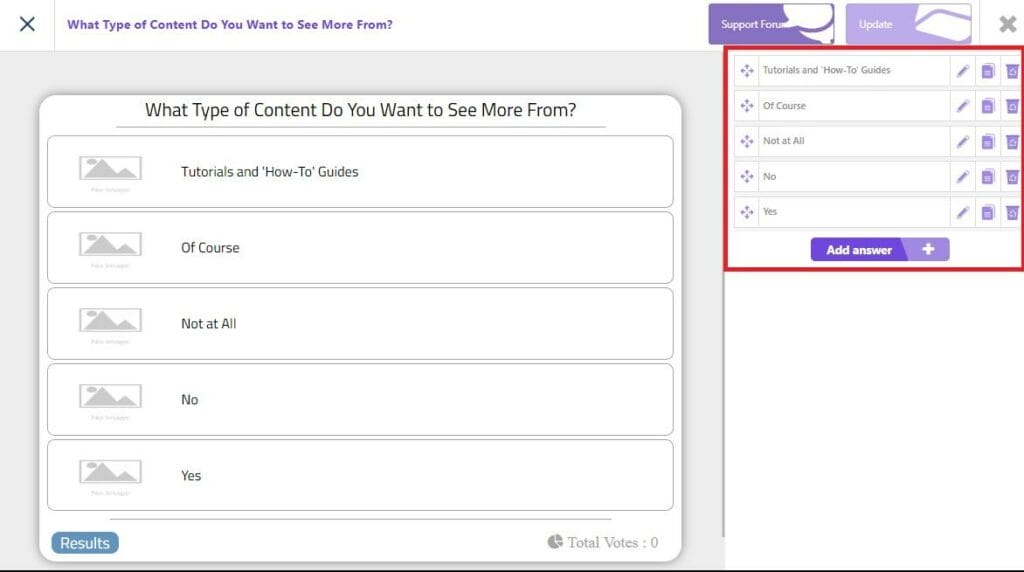
You can now use the panel on the right to edit your poll’s answer options, with each update instantly reflected in the live preview on the left.

Tapping on any of the answers in this panel allows you to not only change the answer to a more suitable one but also upload an image to help your poll stand out and attract more responses.
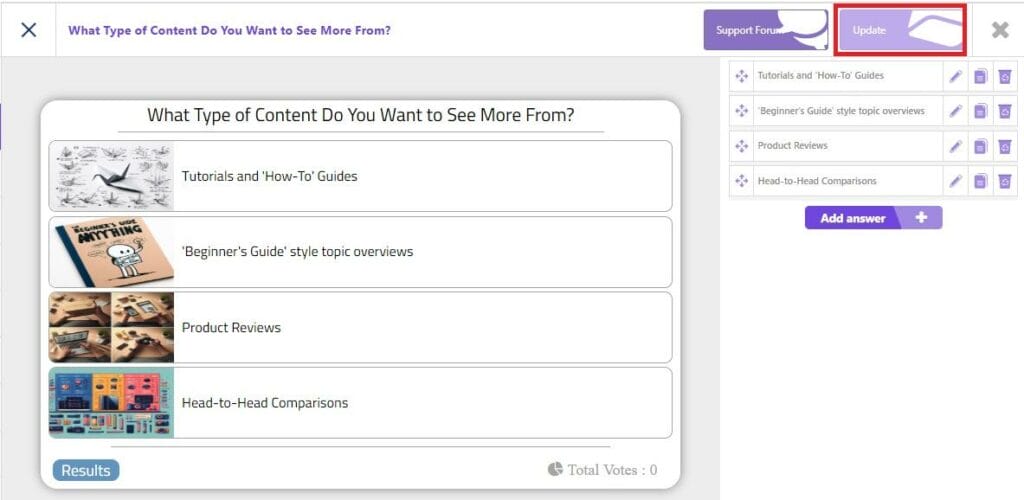
When you’re done, click Update.
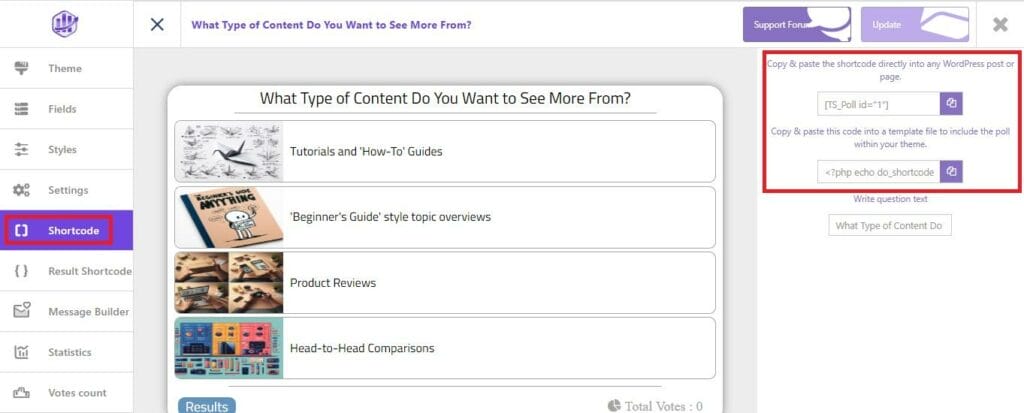
From there, select Shortcode from the TS Poll menu. You can then copy the shortcode and add it to a blog post or page, or embed the PHP code within your theme if you want your poll to feature in a sidebar, header, or footer.

The more your visitors engage with your newly created poll, the more precise the picture will become about the user intent you should focus on with your content.
In this example, you can see that tutorials and beginner’s guides are proving more popular than product reviews and comparisons, meaning our audience is more interested in content that meets an informational intent rather than a commercial one.
How to create content that meets your Website Visitor’s Intent
Now that you know how to determine what your audience wants, let’s dive into some practical tips on how to deliver it by creating content that aligns with each type of user intent.
1. Informational Intent
Informational intent isn’t just the concern of blogs and content sites. Service businesses and even eCommerce store owners can generate traffic, establish authority, and increase conversions by creating comprehensive articles and how-to guides that provide answers and knowledge.
When creating your content, remember to:
- Use clear, concise titles optimized for target keywords.
- Pay attention to content structure, aiming to make it easy for your audience to find the answers to their exact answers as quickly as possible.
- Use images, infographics, and video content to improve readability and enhance your audience’s understanding of the subject.
- Use internal and external links to direct users to other sources of information that could help them expand their knowledge.
2. Navigational Intent
Focusing on navigational intent keywords can enhance your website’s user experience and lead to more streamlined navigation for your visitors, ultimately strengthening your brand’s recognition and online presence.
To do that, you should:
- Ensure your website’s navigation is user-friendly with intuitive menus.
- Implement a site search feature for easy access to specific pages.
- Optimize meta titles and descriptions for branded queries.
- Use breadcrumb navigation to help users trace their steps.
- Create a custom 404 error page with helpful links.
3. Commercial Intent
Creating content that caters to commercial intent keywords can boost user engagement, instill trust, and drive higher conversions, making it a crucial strategy for businesses aiming to help users make informed purchase decisions.
Here, your focus should be on:
- Generating detailed product reviews and buying guides.
- Developing comparison articles to assist users in decision-making.
- Including additional product recommendations to provide users with more options and demonstrate impartiality
- Drawing on first-hand experiences of the products you review and including images and videos that show you have genuine experience with those products.
- Highlighting the value proposition of the products.
4. Transactional Intent
For eCommerce business owners, meeting transactional intent is essential for boosting conversions and turning one-off visitors into repeat customers.
You can do this by:
- Optimizing product pages for a seamless shopping experience.
- Providing secure and efficient checkout processes.
- Offering multiple payment options for flexibility.
- Highlighting customer reviews and product specifications.
5. Local Intent
Whether you run a brick-and-mortar store in a fixed location or a mobile service business meeting the needs of customers in a particular town, city, or region, meeting local intent keywords will prove crucial for connecting with these customers.
Here, you can optimize your chance of success by:
- Creating and optimizing a Google My Business listing for local visibility.
- Ensuring accurate and up-to-date contact details on your website.
- Generating location-specific content to cater to local audiences.
- Encouraging customer reviews to build credibility.
Understanding Website Visitor Intent: Key Takeaways
If this is your first time diving into the world of search intent, it may seem as though there’s an awful lot to take in.
Ultimately, however, there are only four simple key takeaways you need to remember:
- The term ‘search intent’ means the reason behind a user’s search queries – Understanding this intent can unlock new opportunities to boost search rankings, drive traffic, and increase conversions.
- There are five main types of search intent – Informational, navigational, commercial, transactional, and local.
- There are multiple ways to determine search intent – Using SEO tools such as Semrush, looking at your Google Search Console data, and investigating the type of content that ranks highest for your target keywords.
- Crafting content to meet user intent is the key to success – Tutorials and information guides are the best options for informational intent reviews that best suit commercial investigation keywords while improving navigation, structure, and store layout will help optimize your site to meet navigational and transactional keywords.
Finally, for more actionable advice on how to grow your organic search traffic, be sure to use our free WordPress SEO checklist.


